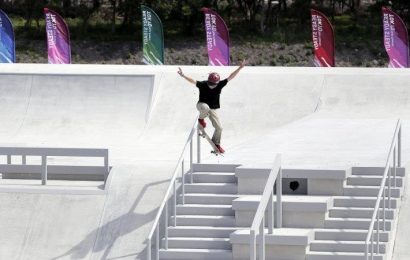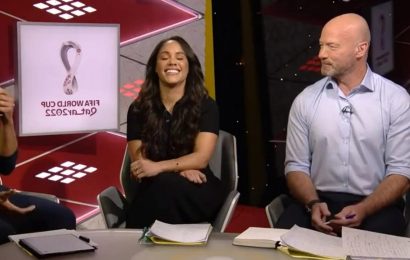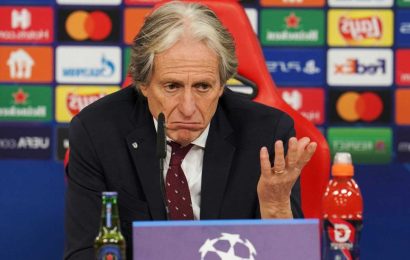Tennis moves fast.
The veteran tennis star Rafael Nadal recently made that observation, discussing how quickly a new generation of players assumes the role of the one before. His words were never truer than on the Suzanne Lenglen court at Roland Garros on Saturday, where Coco Gauff, now in her fifth season on the tour at 19 years old, was locked in a duel with an opponent who reminded Gauff and everyone else of herself from Wimbledon in 2019.
That rival was Mirra Andreeva, a 16-year-old Russian who has exploded onto the women’s tennis tour over the past five weeks.
She knocks off top 20 players. She plays with an easy, smooth power, unruffled by the size of the stage and the fuss suddenly being made about her. She trades text messages with Andy Murray, the three-time Grand Slam champion. She makes sarcastic jokes in news conferences in English.
A similar hype surrounded Gauff four years ago at the All England Club, beating Venus Williams on Centre Court and rolling into the fourth round, riding a hot streak, limited knowledge and the lazy anticipation that the next Serena had arrived. These days, she continues to hunt for her first Grand Slam and top-level tour title.
Glass half-full: Gauff is 19 and is already ranked sixth in singles and third in doubles and still doesn’t have her grown-up strength, as she has said her mother puts it. She is also one of the game’s great athletes, with an active mind and an awareness beyond the lines of the tennis court.
Glass half-empty: Gauff has accumulated some baggage in the form of disappointing losses and inconsistent results during the past few months, and she takes that hard. After her loss in the fourth round at the Australian Open, Gauff left the news conference in tears. She knows opponents pick on her forehand. Her serve can disappear in tense moments.
And now she’s got talented, free-swinging younger teenagers with a nothing-to-lose attitude like Andreeva’s closing in on her potential as the next big thing.
It is both a blessing and a curse of tennis how easy and quickly the declarations of future greatness can come. A couple of early wins, like Andreeva has managed in Paris, on the big stage at a Grand Slam tournament are often all it takes, even if those wins come by an easy draw or catching an opponent on an off day.
This is especially true in women’s tennis, where fully developed raw power is less of a requirement and more girls than boys are able to gain enough of it to compete at the highest level. But tour veterans say that one of their biggest fears is playing a hot young player whose tendencies and weaknesses are still unknown.
“They always win a bunch of matches because no coach has figured it out yet or broken the code,” said Sloane Stephens, 30, who had her own next-big-thing moments as a teenager.
The pandemic, Stephens said, exacerbated the issue. There were so few opportunities to see the teenage prospects on the cusp of the tour because so many junior tournaments were canceled or players could not travel.
There is a mental aspect to the dynamic as well. A young player often comes to the court believing she has nothing to lose, and some veterans are certain they are about to teach a lesson to the whippersnapper on the other side of the net.
Daria Kasatkina said that older teens in the junior ranks are terrified of playing and losing to younger ones and that fear can extend to the tour, when the youngest players are taking on adults.
“At 16, you’re not nervous,” Kasatkina said. “I would say it’s a little advantage. It’s disadvantage, and it’s advantage.”
Kasatkina, who is from Russia, was high on her countrywoman, saying she was already physically strong and beating good players on her way to becoming the most talked about newcomer at the French Open.
For 65 minutes Saturday, the hype was on track to grow. Andreeva was every bit the match for Gauff, especially in the tight moments.
She broke Gauff’s serve when the 19-year-old was serving for the set at 6-5, and then let Gauff give her three set points in the tiebreaker with a shaky forehand and a misfired drop shot. Andreeva whacked a ball into the crowd in anger after losing two of them (“a really stupid move,” she said later), but on her third chance she hit the back of the line on her serve and put away a big forehand to put Gauff in a one-set hole.
But then Gauff stopped giving away points, and Andreeva, with around 10,000 fans in attendance, started to show the lesser qualities of her 16-year-old self. She threw her racket on the court when she dropped an early game in the second set. An ugly, soft and looping second serve early in the third set gave Gauff a 3-1 lead, and it was smooth sailing from there.
Andreeva later said that after she won the first set, the free-and-easy mood she had been playing with since she survived qualifying slipped away. Suddenly, she started thinking about how she was a set away from the final 16 of her first Grand Slam.
“A mistake from me,” she said. “I should have just continued playing.”
Gauff said she told herself that her game plan was essentially working, that she had frittered away a set that she had basically won, but she had also learned how to read body language and to draw confidence when an opponent was growing angry. Chalk one up for age and experience.
Gauff, by her own admission, is in the purgatory years of her evolution, both on the court and off.
“Transitioning into adulthood,” is how she described it on the eve of the tournament, trying to figure out which qualities from adolescence she wants to hang on to and which ones she wants to discard.
Gauff is on the stiffer side of the draw, with a possible quarterfinal match against Iga Swiatek, the world No. 1 who beat Gauff in last year’s final in Paris, if she can get through Anna Karolina Schmiedlova. However, Gauff’s half of the draw became slightly easier Saturday after Elena Rybakina, one of the hottest players in the world this year, withdrew with a respiratory illness.
Once more Gauff will be the younger player in her fourth-round match on Monday. Schmiedlova, of Slovakia, is 28 and ranked 100th in the world.
She said she was long past factoring those numbers into her approach to matches, but she was highly qualified to give advice to at least one demographic in the professional ranks — the upstarts like Andreeva.
“Do it for you,” Gauff said, when asked what she would tell Andreeva about how to approach everything that will, rightly or wrongly, come next after her breakout run in Paris. “Don’t do it for anyone else. When you step on the court you want to make sure it’s for you, and I think life and the game will be a lot more enjoyable that way.”
Matthew Futterman is a veteran sports journalist and the author of two books, “Running to the Edge: A Band of Misfits and the Guru Who Unlocked the Secrets of Speed” and “Players: How Sports Became a Business.” @mattfutterman
Source: Read Full Article







